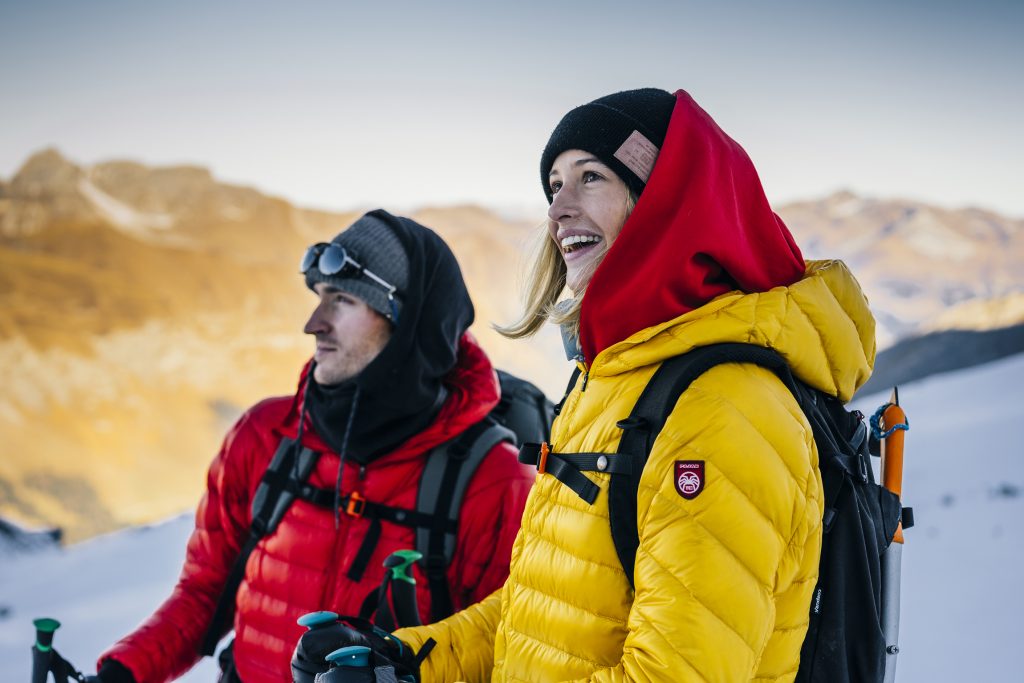
THERMAL COMFORT IN THE MOUNTAINS - HOW TO ENSURE IT?
Weather in the mountains can be unpredictable, so choosing clothing that provides thermal comfort during hikes is not easy. It's best to prioritize flexibility and dress in layers, as you can easily adjust to the prevailing conditions by removing or adding individual garments. Want to know what layers should be included in mountain clothing? In today's post, you will learn about the role of thermal underwear, why it's worth packing a warm down jacket in your backpack, and why cotton is not suitable for mountains.
WHAT WILL YOU LEARN FROM THIS POST?
- What layers should be included in mountain clothing?
- Why does a warm down jacket work well in the mountains?
- Which areas of the body are most susceptible to cooling?
IN BRIEF
To ensure thermal comfort in the mountains, it's worth opting for three layers of clothing. Next to the skin, wear thermal underwear, then a fleece or stretchy sweater, and on top, a membrane jacket. A warm down jacket is a good solution as it can serve both as insulation and an outer layer.
DRESS IN LAYERS
Thermal comfort is largely influenced by the intensity of physical activity. It turns out that most of the energy used by muscles is utilized for heat production, rather than body movement! Therefore, it's advisable to choose clothing that feels slightly cold at the beginning of the trek. Just a few minutes of walking will warm you up! On the other hand, during longer breaks, it's recommended to put on a warm down jacket to avoid body cooling. In the mountains, a three-layered outfit works best: an outer layer, an insulating layer, and thermal underwear. Each layer serves a slightly different function, and you can remove or add garments to find the perfect combination for the current conditions.
THERMAL UNDERWEAR
Thermal underwear is worn directly against the skin, hence it's often referred to as a second skin. Its main purpose is moisture wicking to prevent the body from cooling or overheating. Thermal underwear is usually made from quick-drying synthetic fibers such as polyester or polyamide with a stretchy elastane blend. For those who prefer natural materials, merino wool is highly recommended. It's extremely comfortable, has antibacterial properties, and dries comparably fast to synthetic fibers.

INSULATING LAYER - DOWN OR SYNTHETIC JACKET
This layer is responsible for trapping heat close to the skin and insulating from external cold. The thickness of the garment should be adjusted to the weather conditions - it can be a merino wool sweater, a fleece, or a thin stretchy jacket. However, avoid wearing multiple layers simultaneously as layering too much can completely diminish thermal comfort.
A warm down jacket is also excellent for insulation - it's lightweight, takes up little space in the backpack, and stands out with excellent thermal insulation properties. Keep in mind that the insulating layer should support the moisture-wicking ability of thermal underwear, so it should not be made of cotton. Cotton fabric absorbs moisture quickly, dries slowly, and can cling uncomfortably to the body.
OUTER LAYER
The outer layer's role is to protect against rain, snow, or wind. In winter, it's usually a hardshell membrane jacket that prevents water from entering while allowing moisture to escape through its porous structure. However, during intense activity or slightly higher temperatures, the breathability of such garments may be insufficient. In such cases, it's worth considering a softshell or a warm down jacket with a water-repellent DWR finish. These types of clothing are highly versatile as they can serve both as insulating and outer layers. Even in summer, due to the variable weather conditions in the mountains, it's advisable to always have them in your backpack, even if you're not wearing them.
CARE FOR VULNERABLE AREAS
The most susceptible areas to cooling are the feet and hands, so when preparing clothing for mountain outings, it's important to remember gloves, socks, and good footwear. Another vulnerable area is the head, although the popular belief that one-fourth of body heat is lost through the head is greatly exaggerated. We lose approximately 10% of body heat through the scalp, which doesn't mean we should skip wearing a hat. During hikes, discomfort can also be caused by localized drafts, such as around the neck, lower back, or shoulders. When choosing a warm down jacket, a membrane jacket, or a softshell, it's worth checking if the model is long enough and has a properly shaped hood. Technical pants made of a suitable material can also protect the legs on cold, windy days.
You can find warm down jackets for winter and more at pajaksport.pl.
Image source: pajaksport.pl